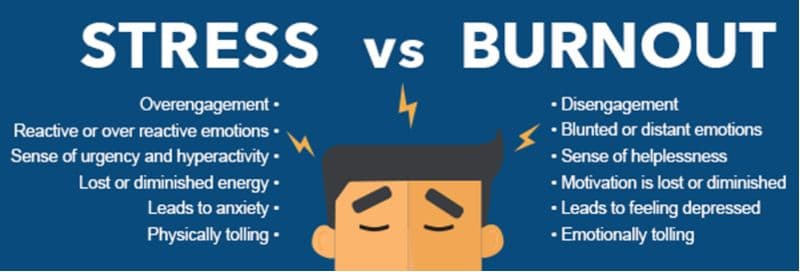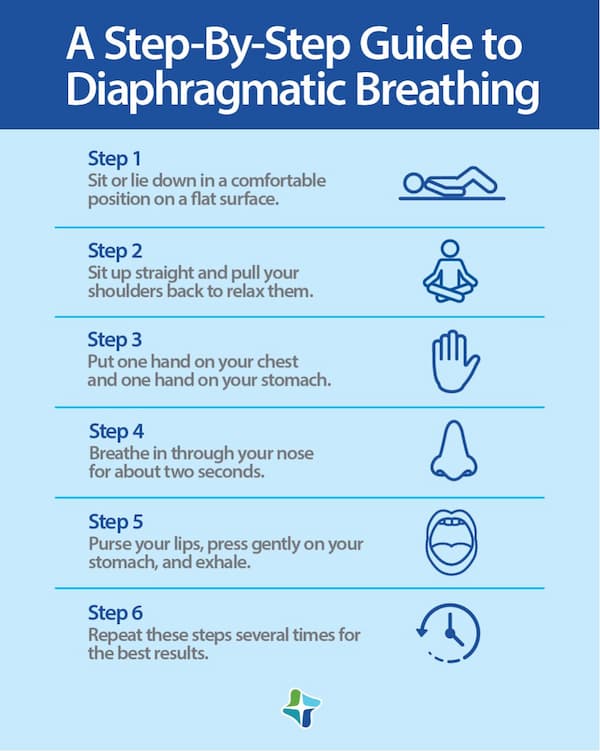Software Developer Burnout Prevention: 4 Effective Relaxation Techniques

What Is Stress?
Stress is a feeling we get when we’re exposed to external or internal stimuli that cause strain or tension, also called stressors. These stressors can be anything and are different for everybody. For example, I would be stressed out by a bug on the wall, and a developer would probably be stressed out by a bug in their code. However, the universal thing is that we can’t get rid of stress, we can just learn to live with it.
Why is it important to learn how to deal with stress? Because prolonged exposure can lead to burnout, which is a more serious and less manageable problem.
Unfortunately, burnout is far more commonplace than you may think. In fact, post-pandemic numbers show that 83% of software developers feel burned out at work. And if you’re a woman or belong to Gen Z, these numbers could be even higher.
How Is Burnout Different from Stress?
While stress impacts your physical health, burnout will impact your mental health and quality of life. You can tell you’re burned-out if you feel that your work doesn’t matter, there is no hope, and you have no mental energy to get anything done.
Here’s a cheat sheet that should help you differentiate between the signs of stress and burnout

If you’ve felt indifferent and unproductive, that can mean that burnout is setting in and it’s already too late because, in those circumstances, many developers start to consider finding a different job (57% of developers reading this, to be exact) or even seek out the help of mental health professionals.
This is something I hear a lot when interviewing candidates and asking why they want to switch jobs. One software developer actually told me during our interview that he is so overwhelmed with multiple projects that he “just wants out.”
What Developers Can Do About Burnout
Don’t worry, there is some good news. As I already mentioned, stress is manageable, and burnout is preventable.
The first thing you can try is removing the stressor:
- Too many tasks? Ask for help.
- Have trouble prioritizing? Create a plan with your manager.
- Feel lost in a forest of tasks? Write a to-do list.
However, sometimes we can’t remove or lessen the stressors in our environment, and they can begin to impact performance. Most of us have had to face an unhealthy environment, unsupportive manager, lack of flexibility, micromanaging, etc. at some point in our careers. And that’s where managing stress comes into play.
Let’s talk further about some relaxation techniques to help you manage stress and, by extension, burnout, before it takes a toll on your mental health.
Managing Stress and Burnout with Relaxation Techniques
The best time to start managing stress is before you’re even feeling it. And the best way to do it is by using techniques that can help you relax before stress-force becomes strong in you.
The great thing about relaxation techniques is that you can incorporate them into your daily routine. They don’t take much time, and you can do them during a short work break, right at your desk. Yes, it’s really that simple, and in the long run, they do wonders for your mental health and wellbeing.
We’ll highlight four simple relaxation techniques you can use to manage stress. You can use them individually or combine them. My advice is to try each of them a couple of times and see what works best for you.
Reinterpretation
The main idea is to understand that your thoughts have no power unless you give it to them and that they don’t control your behavior. Also, your thoughts are not always truthful.
To practice this technique, you would need to “debug” the negative thought that’s been bugging you.
For example, next time you have thoughts like, “My code needs to be perfect. If it’s not, neither am I,” try to think of a positive version of that sentence. The positive version can be something along the lines of: “My code doesn’t need to be perfect. Everyone makes mistakes. I’m doing my best and that’s what’s important.”
I personally find it helpful to imagine how I would talk to a friend feeling the way I am at that moment. Would I berate or criticize them when they’re down? No, I would empathize with and care for them. You could do this by imagining your partner or maybe even your child. See what works for you. The most important thing is to be as gentle with yourself as you would be with a person you love.
Deep Breathing
Fun fact alert! Breathing is the only process of our autonomic nervous system (the one keeping your heart beating and blood pumping without you doing anything) that we can actively control.
When we’re stressed, we tend to breathe shallow and fast. In fact, hyperventilation is one of the common symptoms of panic and anxiety attacks.
So when you’re feeling stressed, try to take a deep belly breath and breathe through it. If you take a few deep breaths, your physical response to stress will decrease long enough for you to focus on finding a solution.
Below you’ll find a step-by-step process for this technique to help you learn and incorporate it into your routine.

This one is my personal favorite because of its simplicity, which takes nothing away from its effectiveness. If this breathing technique is something you find useful, your next step could be to try meditation, a combination of relaxation techniques heavily focused on breath work.
Visualization
If you’ve read a self-help book published in the last 2 decades, chances are you’ve already heard of this technique. It’s another technique sometimes used in meditation. You can practice it in two different ways, depending on the type of stressor you encounter.
Let’s say you need to present your work to managers or clients and you’re very anxious. One way to use visualization would be to create a mental picture of everything going smoothly and imagine yourself acing the presentation.
To master this technique, try to include as many senses and details as you can, including what you’re wearing to the meeting, how the room smells, what you’ll say, how hard you would squeeze the manager’s hand, and how you’d celebrate afterwards.
The other way to practice visualization is to imagine you’re in a place that relaxes you and makes you feel safe. This can be anywhere you like – somewhere in nature, in your childhood bedroom, or even Rivendell or your own Citadel of Ricks (populated by yous, of course). Spend some time in your “happy place” every once in a while and your stressors should be much easier to face.
Progressive Muscle Relaxation (PMR)
Stress can cause tension in your body. This exercise can help you relax your muscles, and when you relax your body, you also relax your mind. As you will see in this video, you can do this in your chair and you can find many different variations online.
The idea is to feel the difference between tense and relaxed muscles. When you shift your focus on that sensation, you become aware of the tension. That’s when your body will relax because you are not in danger and we’re built to save our energy whenever possible.
Burnout Prevention at Newfire Global Partners
Here at Newfire, minimizing stress is one of the crucial components of how we organize our work environment, and that helps keep our team members working with us and making an impact in the software development world.
To help prevent burnout, we ensure that our team members have a good work-life balance. How do we do that? Well, we are flexible as a truly Agile team.
We have a work-from-anywhere policy, which allows our colleagues to work from one of our cozy offices around the world, or their own home if that’s where they’re more comfortable. It also provides the possibility to travel while working for our more adventurous team members.

Secondly, we offer flexible working hours and no time trackers, which removes some of the stress related to tight schedules and work-related pressure.
In addition, we recognize that time off is a significant factor to maintaining a low-stress environment and each of our employees is offered generous PTO.
We use agile methodology, so our team leads can immediately face every challenge that arises. Team members are encouraged to speak up if they are overwhelmed or if they need some assistance. They can speak to their line managers (POs, SM’s, Tech Leads, etc) or contact someone from our friendly HR team.
The final essential ingredient of our low-stress environments is our culture. We see ourselves as a “family of professionals” that is lucky enough to choose its members. Once we hire people whose values align with ours, it’s easy to keep a friendly and relaxed atmosphere. That makes working together easy and comfortable, even when we’re continents apart!
Conclusion
Stress is a part of life and it’s unpreventable. But you can work to prevent burnout, which appears if you don’t manage your stress levels. Some symptoms of burnout include feeling mentally tired, hopeless, indifferent, and unproductive.
To manage stress and prevent burnout you can use relaxation techniques that we covered here, such as the reinterpretation technique, deep breathing, visualization and progressive muscle relaxation. You can do them in your office chair and they don’t take long. Incorporate them into your routine and they will help you keep calm and carry on.
Hopefully, you’ll try them out and see which ones (or what combination of them) work best for you.

Ivana is a recruitment specialist at Newfire Global Partners with a master’s degree in psychology. She’s always on the lookout for the best IT talent, but when she’s not handing out job offers, she enjoys watching movies or solving jigsaw puzzles. You can easily make her smile with a good pun.